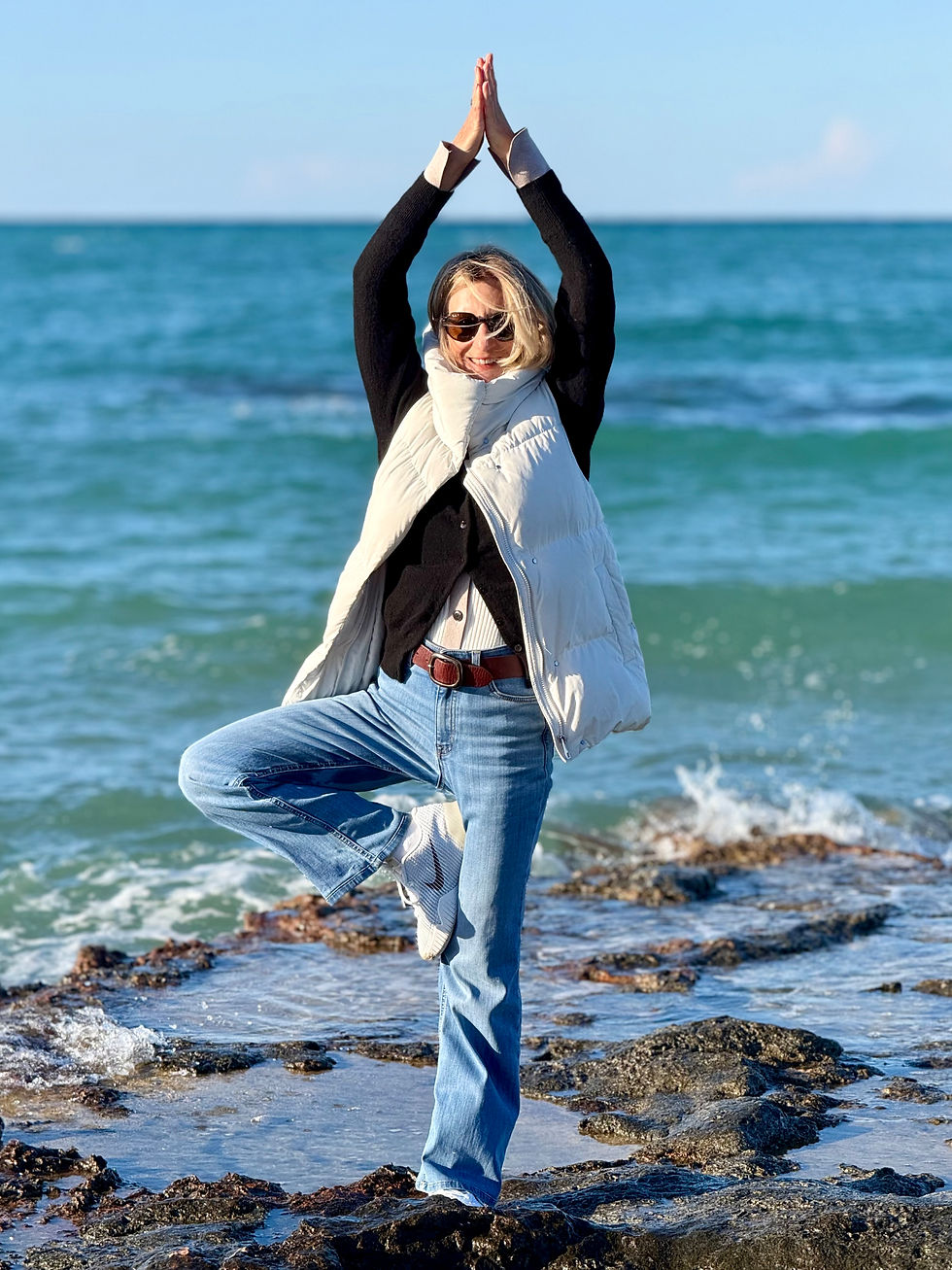Meditation...a personal approach
- James
- Dec 17, 2024
- 3 min read
Updated: Feb 15

Meditation is a powerful tool for achieving a sense of ease, serenity, and balance in our lives. With over 40 years of personal practice, I've explored various approaches, from Transcendental Meditation (TM) learned in the 1980s to modern mindfulness techniques.
To begin my meditation, I find a comfortable spot where I can sit uninterrupted for about 25 minutes. This could be anywhere—from a quiet corner at to a park bench or even a seat on a train. I start by taking four deep breaths, inhaling through my nose and exhaling through my mouth. On the fourth exhale, I close my eyes and shift to normal breathing through my nose.
Next I take a moment to ground myself by feeling the seat beneath me, the floor under my feet, my hands resting on my thighs. I might notice the vibrations of the vehicle I’m traveling in or feel the gentle wind against my cheeks. This awareness helps me connect with the present moment, paving way for a more profound meditation experience.
Next, I turn my attention to the sounds around me—whether it’s children playing, builders hammering, or fellow passengers chatting. By acknowledging these sounds, I find they no longer disrupt my meditation.
I then reflect on what I hope to gain from this meditation session. It could be a calming of the mind, a boost of creativity for the day ahead, or simply a moment of quiet relaxation. For me, it’s often about finding that peaceful space within.
As I settle further into my practice, I take a moment to recognise how I’m feeling, both physically and emotionally. I consciously scan my body, starting from my head and moving down to my toes, paying attention to how each part feels in that moment.
Finally, I focus on my breath. I become aware of my belly rising and falling, noticing the subtle changes that occur at the end of each inhale and exhale. This deep connection to my breath anchors me further into the present, enhancing my meditation experience.
I then shift my focus to my personal mantra, a meaningless word that I repeat effortlessly in my mind. It’s less about repetition and more about holding the sound of my mantra in my consciousness. I find that this practice helps my attention drift naturally to a quieter and less active state of mental functioning.
My mantra was given to me by a TM instructor many years ago, and I respect the tradition of keeping it secret for optimal results.
If you’re interested in creating your own mantra, choose any meaningless word that resonates with you—something that sounds pleasant and feels right. The effectiveness of the mantra lies in its use within the technique, not in its specific meaning or origin.
Importantly, don’t be alarmed or frustrated by any random thoughts that may arise during your meditation. Simply acknowledge them gently and return your focus to the mantra when you become aware. This process is a natural part of the journey, allowing you to deepen your meditation practice.
I notice that my mantra has a significant impact on my breathing, which often becomes noticeably shallower as I settle into the practice. I aim to meditate for 15 to 20 minutes whenever possible, but I’ve also discovered the profound benefits of taking just 10 or even 5 minutes to practice during moments of stress.
At the end of my meditation, I like to remain in silence for another 3 minutes or so, not focusing on anything in particular. I then listen to the sounds around me once more and reorient myself to my surroundings. Gently, I open my eyes, carrying forward the serenity that my practice has instilled in me.
I hope you find this guidance helpful. Meditation has been an invaluable tool for me over the years, and I encourage you to explore its benefits in your own life.

I



Comments